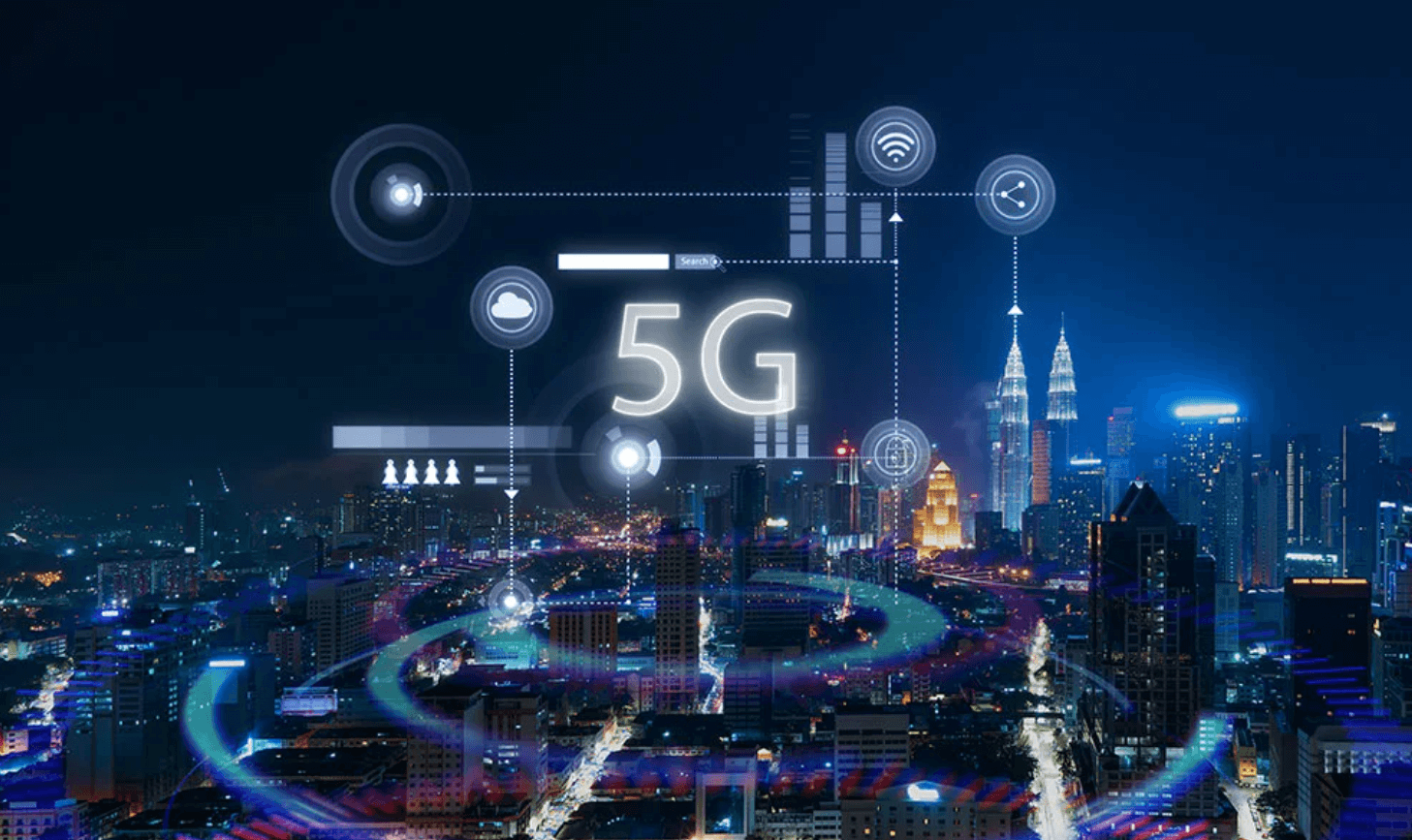The arrival of 5G connectivity marks a significant milestone in the evolution of mobile and wireless communication. With faster speeds, lower latency, and enhanced connectivity, 5G is set to revolutionize industries across the globe. From transforming how we use our smartphones to enabling the rise of smart cities, autonomous vehicles, and the Internet of Things (IoT), 5G is more than just an upgrade—it’s a game-changer. But what lies beyond 5G? This article will explore the benefits of 5G, its current applications, and the exciting possibilities of future generations of mobile networks like 6G.
What is 5G Connectivity?
5G is the fifth generation of mobile network technology, following its predecessor, 4G LTE. It offers significantly faster data speeds, higher capacity, and more reliable connections. While 4G networks were focused on improving internet speeds for smartphones, 5G connectivity opens the door to new innovations in various industries, offering up to 100 times faster speeds and much lower latency (down to 1 millisecond).
The three main features of 5G technology are:
- Enhanced Mobile Broadband (eMBB): Faster internet speeds that enable HD streaming, quicker downloads, and better overall mobile experiences.
- Ultra-Reliable Low Latency Communication (URLLC): Critical for applications where real-time data transfer is essential, such as autonomous vehicles, remote surgeries, and industrial automation.
- Massive Machine-Type Communication (mMTC): Designed to connect a vast number of devices simultaneously, supporting the Internet of Things (IoT) in smart cities, homes, and industries.
The Benefits of 5G Connectivity
5G is not just about faster internet—it brings a host of benefits that will reshape how we communicate and interact with technology. Some of the key benefits include:
1. Faster Data Speeds
One of the most significant advantages of 5G is its data speeds, which can reach up to 10 Gbps. This enables users to download large files, stream high-quality videos, and access cloud-based applications with virtually no lag. Whether you’re a casual smartphone user or a professional working in data-heavy industries, 5G’s speed opens up new possibilities for mobile connectivity.
2. Low Latency
Latency refers to the time it takes for data to travel between two points, and 5G reduces latency to an unprecedented level of 1 millisecond. This makes 5G ideal for applications that require real-time responses, such as online gaming, autonomous driving, and virtual reality (VR) experiences.
3. Increased Network Capacity
With the rise of the IoT, where billions of devices need to connect to the internet, 5G’s increased network capacity ensures that more devices can be connected simultaneously without congestion. This is particularly important in densely populated areas, smart cities, or industrial zones, where a vast number of devices rely on constant connectivity.
4. Better Reliability
5G networks are designed to be more reliable than previous generations, ensuring consistent performance even in high-demand areas like stadiums, concerts, or busy urban centers. This level of reliability is crucial for applications that cannot afford connection drops, such as industrial automation or emergency services.
5. Improved Energy Efficiency
5G networks are also more energy-efficient than their predecessors. By using network slicing and other techniques, 5G optimizes power consumption, which is crucial for supporting IoT devices that rely on long battery life and efficient energy use.
Current Applications of 5G
5G is already being adopted in various industries and transforming how businesses and consumers interact with technology. Here are some of the most impactful current applications of 5G:
1. Smart Cities
5G is the backbone of smart cities, enabling real-time data collection and analysis that can improve traffic management, energy efficiency, waste management, and public safety. With 5G, smart city infrastructure can communicate seamlessly, leading to safer, more efficient urban environments.
2. Autonomous Vehicles
Self-driving cars rely on real-time data from sensors, cameras, and other vehicles. 5G’s low latency and high reliability are critical for ensuring that autonomous vehicles can navigate roads safely, avoid collisions, and communicate with infrastructure like traffic lights and road signs in real-time.
3. Telemedicine and Remote Healthcare
Telemedicine has seen a significant boost with 5G, allowing doctors to perform remote consultations, surgeries, and diagnostics with minimal delay. With 5G connectivity, real-time data sharing and high-definition video streaming enable healthcare professionals to provide better care, even from a distance.
4. Augmented Reality (AR) and Virtual Reality (VR)
5G enables more immersive AR and VR experiences, whether for gaming, training, or professional applications. With 5G’s low latency, users can enjoy smoother, more realistic experiences without lag, whether exploring virtual environments or engaging in real-time augmented interactions.
5. Industrial Automation
In manufacturing and logistics, 5G allows for advanced industrial automation. Machines can communicate with each other in real-time, optimizing production processes, reducing downtime, and increasing efficiency. 5G-powered automation is set to revolutionize industries such as automotive manufacturing, agriculture, and mining.
What Comes After 5G? The Future of Connectivity: 6G and Beyond
While 5G is still being deployed globally, researchers are already looking ahead to the next generation of wireless communication—6G. Here’s a glimpse of what 6G and beyond could offer:
1. Even Faster Speeds and Lower Latency
6G is expected to offer speeds of up to 100 Gbps and even lower latency than 5G, enabling instantaneous data transfer. This would make applications like holographic communication, immersive gaming, and real-time virtual presence a reality.
2. Terahertz Waves
6G may utilize terahertz waves, which operate at higher frequencies than 5G’s millimeter waves. This would enable faster data transmission over short distances, ideal for smart environments and high-speed data hubs, though it would require new infrastructure to support these frequencies.
3. AI Integration
6G is expected to integrate more deeply with artificial intelligence (AI), allowing networks to be more autonomous and efficient. AI-powered networks could self-optimize, predict demand, and allocate resources dynamically, ensuring that users experience the highest possible performance without human intervention.
4. Holographic and XR Communication
While 5G enables VR and AR, 6G is expected to support holographic communication and extended reality (XR), where users can engage in fully immersive, 3D environments for both work and play. This could revolutionize sectors such as entertainment, education, and even remote work by offering new forms of digital interaction.
5. Global Connectivity
As 6G is developed, there is a focus on providing global connectivity, especially to underserved or rural areas where high-speed internet access is limited. Satellite-based 6G networks, combined with ground-based infrastructure, could ensure that the internet reaches every corner of the globe, closing the digital divide.
The Impact of 5G and Future Connectivity on Businesses
The business world is already benefiting from 5G, and future generations of mobile networks will bring even more transformative changes. Here’s how:
1. Improved Customer Experience
Businesses that adopt 5G can provide faster, more reliable services to their customers. This is particularly important for industries like e-commerce, entertainment, and financial services, where customer experience and real-time interactions are key.
2. New Business Models
The capabilities of 5G will enable companies to develop new business models and revenue streams. For example, smart factories and IoT-based businesses can use real-time data to optimize operations and offer new services such as predictive maintenance or customized production.
3. Enhanced Collaboration and Remote Work
With 5G, businesses can implement more advanced remote work solutions, including AR/VR meetings, real-time collaboration, and better video conferencing. 5G’s high-speed connectivity ensures that remote workers have seamless access to company resources, improving productivity and collaboration.
Conclusion
5G connectivity is transforming industries, businesses, and daily life, offering faster speeds, lower latency, and new possibilities for innovation. From smart cities to autonomous vehicles and telemedicine, the impact of 5G is far-reaching, and as the technology continues to evolve, we can expect even greater advancements in communication and data transfer. The future of connectivity, with 6G and beyond, promises to push the boundaries of what’s possible, enabling even more immersive, efficient, and intelligent networks.
As 5G continues to roll out worldwide, it’s clear that we are only scratching the surface of its potential. The next decade will be marked by rapid advancements in communication technology that will shape the way we live, work, and interact with the world around us.




